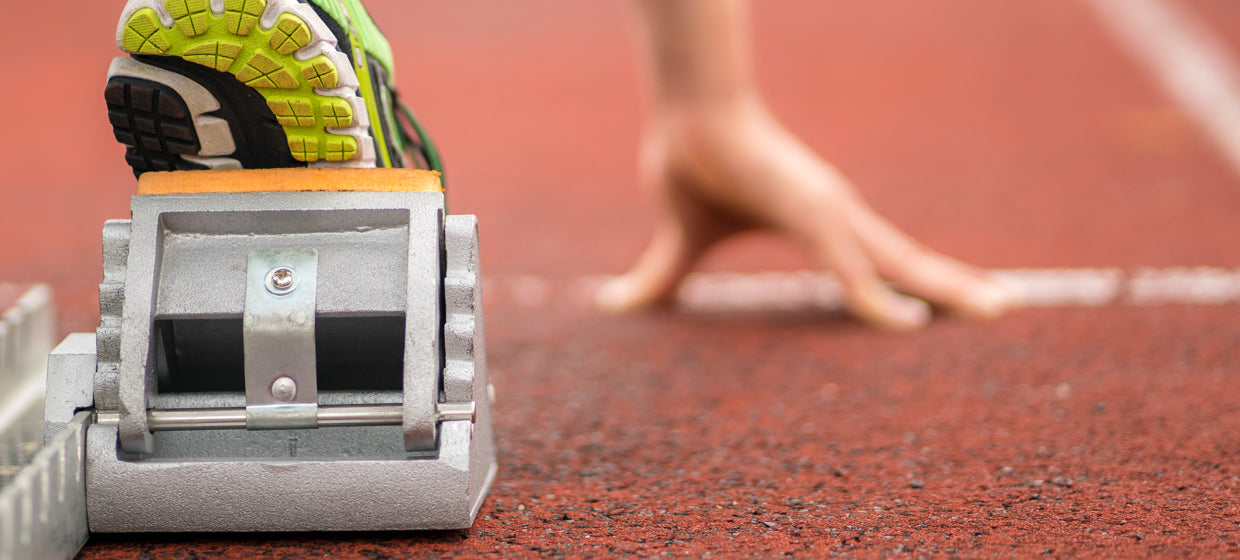
Video: How to choose starting blocks
This 'How to...' video explains the similarities and differences between the various types of starting blocks available and offers tips to athletes on which features to consider when buying your blocks.
See below for a written guide.
Neuff - Serious about Sport
How to choose starting blocks
We are considering the choice between World, Classic, Pro-Olympic, Super-Olympic and Galaxy starting blocks.
Similarities between blocks
All the blocks have:
- Strong, heavy duty synthetic polymer footpads with hard-wearing grip patterns that take track spikes
- The angle of the footpads can be adjusted by use of a simple bar changer at the back
- A T-bar fitting, with four spikes at the front and a T-bar at the back for four spikes on either side. Starting block spikes come in either 9mm or 11mm spikes to fit into a synthetic track surface. The blocks also have three pin-fixing points for use on grass tracks and other such surfaces (pins not included)
Differences between blocks
World:
- Pyramid structure grip on footpad
- Footplate has single bolt system fixing point, so it fixes onto one groove on the centre bar. This is not noticeable on tracks and even surfaces, but athletes may notice more ‘play’ in the footplates on uneven surfaces such as grass.
- 6kg weight – suitable for all athletes and an appropriate weight for younger/lighter athletes to carry
- Mid-length centre bar – standard width
- No lifting handle
- Certified by World Athletics
- Size 2 block bag
Classic:
- Small speckled dimples with a grip-bar on footpad
- Footplate has double bolt system fixing point, so they fix onto two of the grooves on the centre bar
- 6kg weight – suitable for all athletes and an appropriate weight for younger/lighter athletes to carry
- Shorter centre bar – standard width
- With lifting handle
- Size 2 block bag
Pro-Olympic:
- Small speckled dimples with a grip-bar on footpad
- Footplate has double bolt system fixing point, so they fix onto two of the grooves on the centre bar
- 6kg weight – suitable for all athletes and an appropriate weight for younger/lighter athletes to carry
- Shorter centre bar
- With lifting handle
- Narrower centre bar (chromed steel). This enables a narrower stance, but is also good for athletes with a standard stance.
- Size 2 block bag
Super-Olympic:
- Rounded dimple grip footpad
- Footplate has single bolt system fixing point, so it fixes onto one groove on the centre bar. However, the footplates are generally very stable despite this, certainly on even track surfaces.
- 5kg weight – suitable for heavier and stronger athletes who want more resistance to push against. These blocks are unnecessarily heavy for younger athletes to carry around.
- Longer centre bar, enabling a wider distance between the feet. Standard width of bar
- With lifting handle
- Certified by World Athletics
- Size 3 block bag
Galaxy:
- Rounded dimple grip footpad
- 9kg weight – suitable for heavy use. These blocks are generally purchased by stadia and clubs for use in competitions. They are generally transported around the track on a trolley or trailer.
- Longer centre bar – standard width
- No lifting handle


Leave a comment